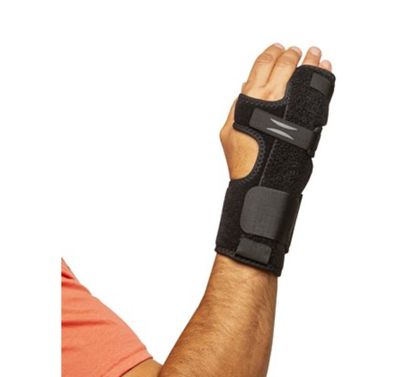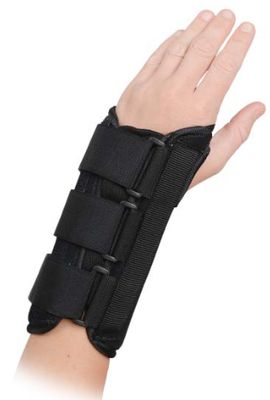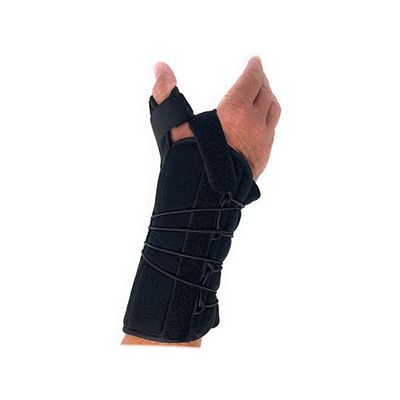Orthopedic (ortho) braces are medical devices designed to support, align, stabilize, or protect muscles, joints, and bones, typically after injury or surgery. These braces can help with recovery by limiting movement, providing compression, and offering structural support to reduce stress on the affected area. They come in various types, each tailored to specific injuries or conditions. Here are some key categories of orthopedic braces:
1. Knee Braces
– Function: Provide support to the knee joint, often used for conditions like arthritis, ACL tears, meniscus injuries, or after surgery.
– Types:
– Hinged braces: Offer more rigid support and restrict side-to-side movement.
– Compression sleeves: Provide mild support, improving blood flow and reducing swelling.
2. Back Braces
– Function: Stabilize and support the lumbar or thoracic spine, commonly used for conditions like scoliosis, herniated discs, or after spinal surgery.
– Types:
– Rigid braces: Limit spinal movement and offer significant support.
– Flexible braces: Allow some movement while providing mild support and pain relief.
3. Ankle Braces
– Function: Stabilize the ankle joint after sprains or ligament injuries.
– Types:
– Lace-up braces: Provide adjustable compression and stability.
– Rigid braces: Offer maximum support to prevent any movement.
4. Wrist and Hand Braces
– Function: Immobilize or support the wrist and hand, commonly used for carpal tunnel syndrome, wrist fractures, or tendonitis.
– Types:
– Splints: Rigid or semi-rigid braces that limit movement.
– Compression braces: Provide support without fully restricting movement.
5. Elbow Braces
– Function: Support the elbow joint, often used for conditions like tennis elbow or golfer’s elbow.
– Types:
– Strap braces: Target compression to relieve tendon strain.
– Hinged braces: Offer greater support and restrict specific movements.
Materials
Orthopedic braces are typically made from a combination of materials, including:
– Neoprene: For elasticity and compression.
– Nylon or Polyester: For durability and flexibility.
– Plastic or Metal: For rigid components that provide structural support.
– Foam Padding: For comfort and cushioning against the skin.
Usage
Orthopedic braces are used in a wide range of cases:
– Post-surgical recovery: To stabilize the area while healing.
– Injury prevention: For athletes to protect vulnerable joints during high-risk activities.
– Chronic conditions: Such as osteoarthritis or rheumatoid arthritis, where joints require ongoing support.
Custom vs. Off-the-Shelf Braces
– Custom braces: Made to fit an individual’s specific anatomy, offering the highest level of support and comfort.
– Off-the-shelf braces: Available in standard sizes and are generally more affordable and convenient but may not provide the perfect fit or maximum support.
These devices help manage pain, facilitate healing, and allow patients to remain active while recovering from injuries.
Easy Adjustable Wrist Orthosis - UNIVERSAL
An Adjustable Wrist Orthosis is a medical device designed to provide support, stability, and immobilization to the wrist while allowing for customization to fit individual needs. It is commonly used in the treatment of wrist injuries, chronic pain, or conditions requiring wrist immobilization or stabilization. Below is an explanation of its features and uses:
Key Features
- Adjustability:
- Equipped with adjustable straps, Velcro closures, or laces to customize the fit and compression according to the user's wrist size and comfort.
- Some models allow for adjustments to the angle or position of the wrist, providing tailored support for specific conditions.
- Supportive Design:
- Made from rigid or semi-rigid materials like plastic or metal splints embedded in soft, padded fabric.
- Provides stability to the wrist by limiting motion or maintaining it in a neutral or functional position.
- Universal Fit:
- Many adjustable orthoses are designed to fit a wide range of wrist sizes, making them versatile and convenient for multiple users.
- Breathable Materials:
- Often made from lightweight, breathable fabrics to ensure comfort during prolonged use.
- Equipped with adjustable straps, Velcro closures, or laces to customize the fit and compression according to the user's wrist size and comfort.
- Some models allow for adjustments to the angle or position of the wrist, providing tailored support for specific conditions.
- Made from rigid or semi-rigid materials like plastic or metal splints embedded in soft, padded fabric.
- Provides stability to the wrist by limiting motion or maintaining it in a neutral or functional position.
- Many adjustable orthoses are designed to fit a wide range of wrist sizes, making them versatile and convenient for multiple users.
- Often made from lightweight, breathable fabrics to ensure comfort during prolonged use.
Common Uses
- Injury Recovery:
- Helps immobilize the wrist after sprains, fractures, or surgeries to promote proper healing.
- Chronic Conditions:
- Provides support for managing pain associated with arthritis, tendonitis, or carpal tunnel syndrome.
- Post-Surgery Rehabilitation:
- Assists in post-operative care by stabilizing the wrist to prevent unnecessary movement.
- Spasticity Management:
- Used for neurological conditions like stroke, cerebral palsy, or multiple sclerosis to reduce spasticity and improve wrist positioning.
- Workplace Ergonomics:
- Worn by individuals performing repetitive tasks to prevent overuse injuries.
- Helps immobilize the wrist after sprains, fractures, or surgeries to promote proper healing.
- Provides support for managing pain associated with arthritis, tendonitis, or carpal tunnel syndrome.
- Assists in post-operative care by stabilizing the wrist to prevent unnecessary movement.
- Used for neurological conditions like stroke, cerebral palsy, or multiple sclerosis to reduce spasticity and improve wrist positioning.
- Worn by individuals performing repetitive tasks to prevent overuse injuries.
Benefits
- Reduces pain and inflammation by stabilizing the wrist and preventing harmful movements.
- Enhances recovery by promoting proper alignment and reducing strain on injured tissues.
- Lightweight and adjustable, allowing for prolonged use without significant discomfort.
These devices are commonly recommended by physicians, physical therapists, or occupational therapists and are often paired with exercises or therapy programs for optimal recovery.
SUGGESTED HCPC: L3916
ORDER NUMBER: 4100-E
SIZE: Universal
PRODUCT HIGHLIGHTS:
• Strong flexion synergy of the fingers and the wrist
• Adjustable hinge at the wrist to help increase wrist extension
• Optional finger separators help to prevent pressure areas
• Fits either left or right wrist





